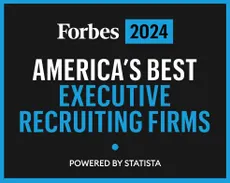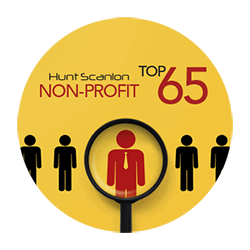It’s often said that corporate culture is the one thing about an organization that cannot be copied – the special something that, all else being equal, makes your company truly unique. It’s your competitive advantage. But how do you know when your culture is working hard to drive performance (organizationally and with your team members), and when it’s starting to fall down on the job?
Here are three tips for how you can ensure you’re leveraging your culture to its full advantage.
- Really understand your current culture (assess)
The best way to get a handle on your culture – your real culture, not the culture you think you have or the culture you hope you have – is through a culture and/or engagement survey. A good cultural assessment will include both qualitative and quantitative questions, allowing you to understand the behaviours that are key to your culture as well as how people feel about the organization, the leaders, etc. If you’re not already doing annual surveys, backed up by regular pulse surveys to determine your progress against key goals, you’re missing a big opportunity.
- Have a clear picture of what your culture would need to look like in order to achieve your goals (craft)
Once you know where your culture is at, you need to ask yourself: is this what and where we want to be, or do we want to be something different? Visioning – or curating culture – isn’t about the “how”. It’s about dreaming big; sitting down and seriously considering what the best version of your culture would be. How do you want the organization to look? How do you want people to feel about your organization? Will the values be any different in the future? What words would you use to define your culture? What are the key behaviours of your top performers? If you can’t see where you want to be, you can’t make a plan to get there.
- Have a roadmap for getting from “now” to “when” (plan)
Sometimes your reality and your vision will match up perfectly; sometimes you’ll have some work to do to get you from Point A to Point B. But clearly understanding where you want to go means you can map out a plan to get there.
Assessing your current culture, crafting a vision for your ideal culture, and planning your route from Point A to Point B are three key steps to ensuring your culture is really your competitive advantage. They’re also the first three hubs in Waterstone’s Culturepreneur Operating System – a facilitated process that walks leaders through a simple, proven, and measured process to drive performance through culture transformation.
Whichever process you choose, assessing, crafting and planning your culture are three key ingredients for making sure culture truly is your competitive advantage. Contact us to today to learn more about how the executive search, and leadership and cultural advisory experts at DRiWaterstone can help!
object(WP_Post)#4754 (24) {
["ID"]=>
int(6723)
["post_author"]=>
string(2) "10"
["post_date"]=>
string(19) "2022-09-01 14:56:58"
["post_date_gmt"]=>
string(19) "2022-09-01 14:56:58"
["post_content"]=>
string(3658) "
By Nicole Bendaly
Until you understand what your current culture looks like, it's very difficult to understand where you need to go and what you need to shift and evolve. The best organizations understand what their current culture looks like, and when they’re looking to change, they take the time to define the ideal culture that their leaders need to strive for. It's not always about changing. Sometimes it's about making a shift - about honouring, nurturing and protecting what’s great about today’s culture, and fine-tuning those things that aren’t working any more or that have gotten off track.
Four key culture levers that organizations can use to affect culture change
- Mission, vision, values. Sometimes organizations need to get clear on their vision, revise their values, or better connect their people to their mission or purpose. Focusing on defining values or looking at ways to really connect and build accountability around the organization’s vision and purpose is a powerful lever that can have an important impact on culture.
- Leadership. Probably the most powerful lever that organizations have is leadership. Do you have culturepreneurs in the organization? On your leadership team? What skills tools and strategies do your leaders need in order to craft your ideal culture? Getting alignment on culture within the leadership, and developing leaders who champion the role of culture on performance, is a vital tool for affecting culture change.
- People. An organization cannot achieve its vision and drive exceptional results without people, and a high-performance organization is made up of people who actively live the organization’s values every day and bring with them unique skills, experiences and perspectives that add to the culture in a manner that will enable the organization to achieve its vision. Are you attracting, hiring, developing, and retaining people who are highly engaged, with the qualities, behaviours, mindsets, and skills to positively contribute to the organization’s culture and performance. What do your people need to become culture crafters of your organization?
- Systems, processes and policies. If your performance management policy doesn't support a growth mindset, if it isn't measuring the right things, or isn't taking a coach-like approach, then chances are you won't be building an empowered workforce. If your policy around making mistakes or learning doesn't support empowerment, then you won't build an empowered workforce. And if your career management and talent management plan doesn't support empowerment, you won't build a workforce focused on continuous learning.
Knowing which lever to pull to best achieve your culture goals is important. To learn more about culture transformation and how DRiWaterstone can help organizations with their culture transformation journeys, contact us.
"
["post_title"]=>
string(68) "Four Culture Levers That Can Affect Meaningful Organizational Change"
["post_excerpt"]=>
string(0) ""
["post_status"]=>
string(7) "publish"
["comment_status"]=>
string(4) "open"
["ping_status"]=>
string(4) "open"
["post_password"]=>
string(0) ""
["post_name"]=>
string(68) "four-culture-levers-that-can-affect-meaningful-organizational-change"
["to_ping"]=>
string(0) ""
["pinged"]=>
string(0) ""
["post_modified"]=>
string(19) "2022-12-07 19:26:57"
["post_modified_gmt"]=>
string(19) "2022-12-07 19:26:57"
["post_content_filtered"]=>
string(0) ""
["post_parent"]=>
int(0)
["guid"]=>
string(66) "http://purring-discovery.flywheelsites.com/driwaterstonehc/?p=6723"
["menu_order"]=>
int(0)
["post_type"]=>
string(4) "post"
["post_mime_type"]=>
string(0) ""
["comment_count"]=>
string(1) "0"
["filter"]=>
string(3) "raw"
}






